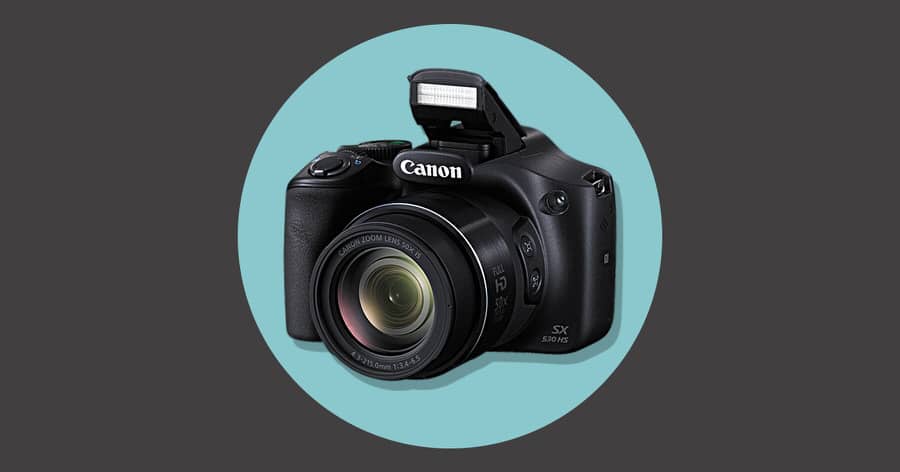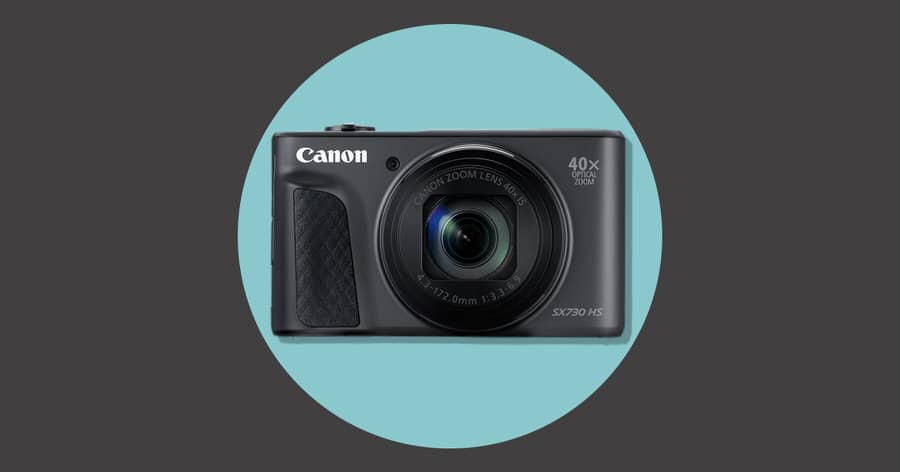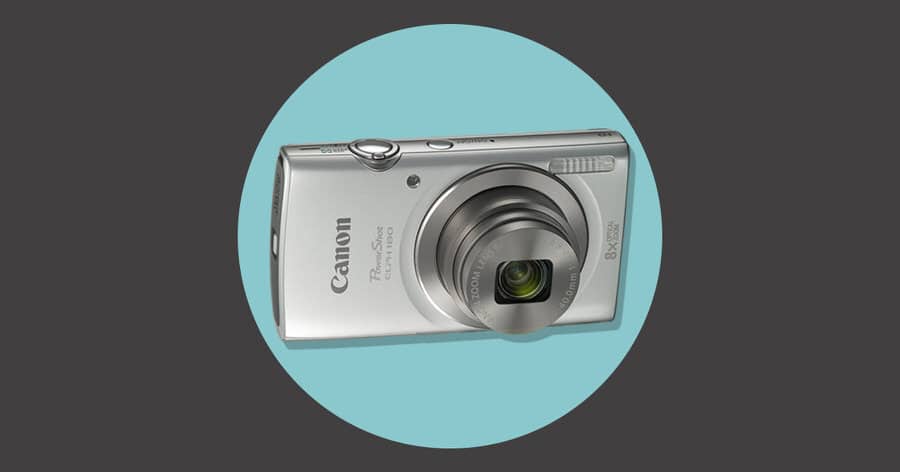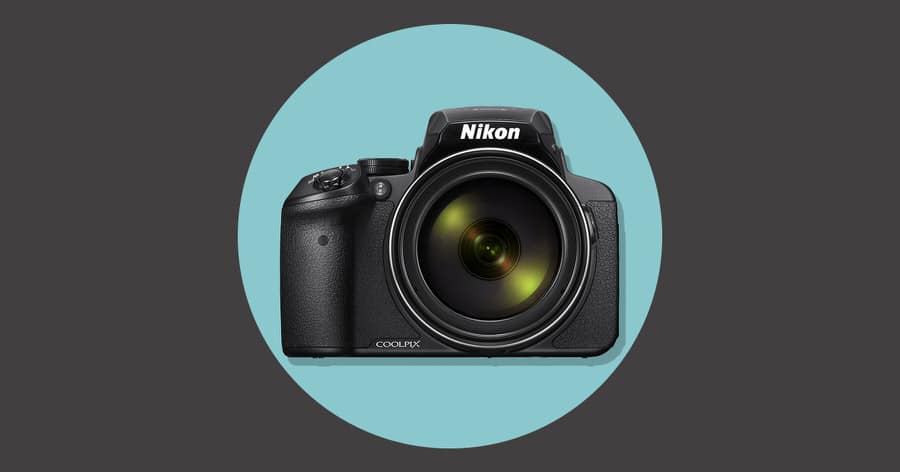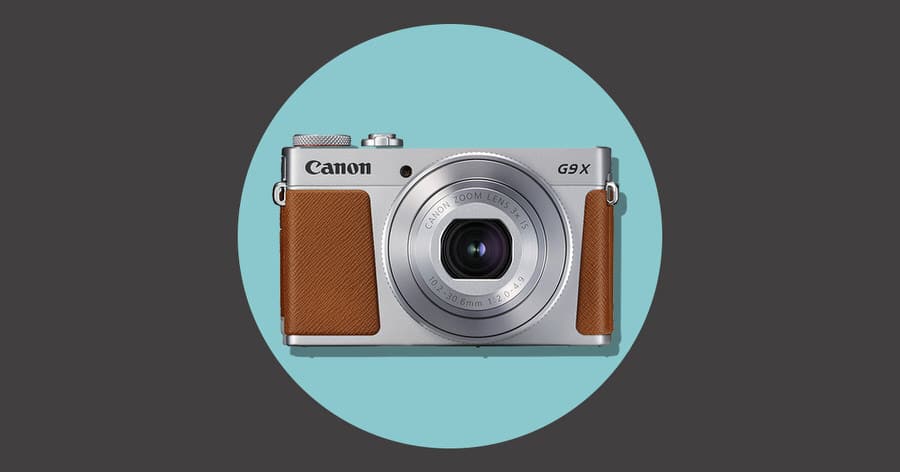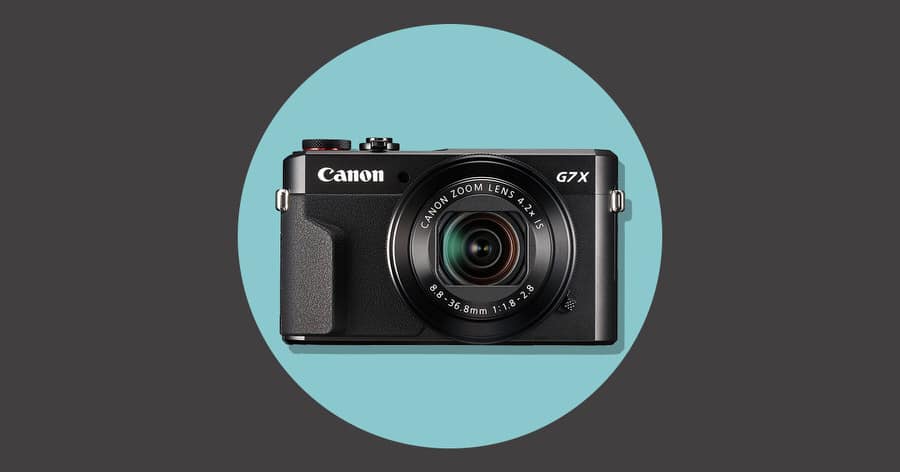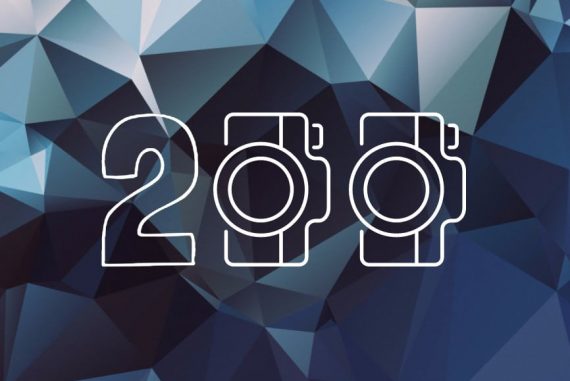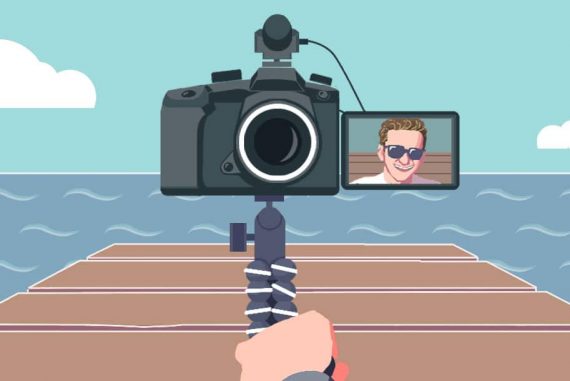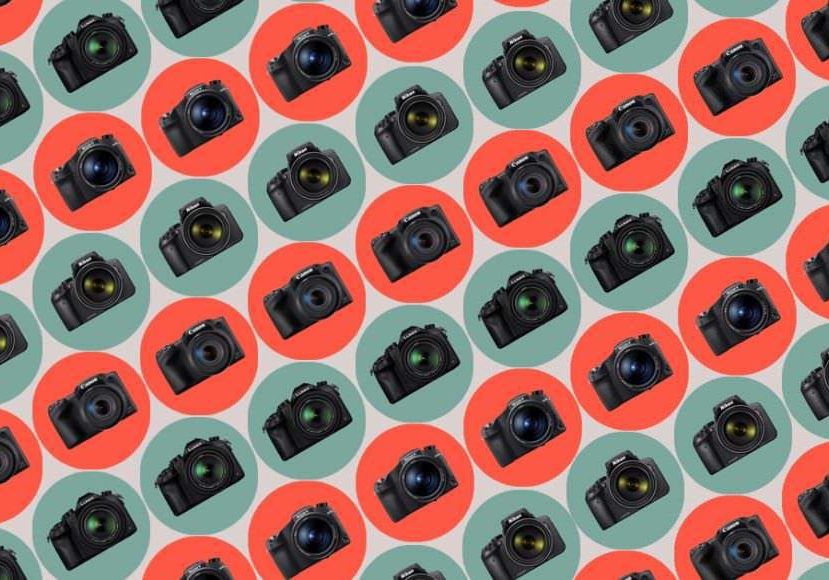
Best Point and Shoot Camera (P&S) for Simplified Photography
These are the best point and shoot cameras of the year that represent excellent bang for your buck, whilst still delivering great image quality. 👍🏼
We decided to put together this selection of the best point and shoot cameras in an attempt to take the attention away from today’s fancy smartphones.
Here in 2023, a smartphone is always within arm’s reach to snap a moment, but that doesn’t mean it’s the best tool for the job.
We’re here to tell you that the humble point and shoot camera isn’t dead yet! Far from it, in fact…
The latest compact cameras may not be as slender as some smartphones, but with their enhanced image sensors, optical zoom, image stabilization, inbuilt flash, longer battery life, and many other useful features, they still offer a much better photography experience than your average iPhone.
Note this is an article on digital P&S cameras – see this guide for point-and-shoot film cameras.
Best Point and Shoot Cameras of 2023
| Image | Product | Details | |
|---|---|---|---|
 | Canon Powershot SX530 HSOUR #1 CHOICE |
| View Price → |
 | Canon Powershot SX730 HSTOP RATED |
| View Price → |
 | Canon PowerShot SX420 ISGREAT VALUE |
| View Price → |
 | Canon PowerShot ELPH 180 |
| View Price → |
 | Ricoh GR II |
| View Price → |
 | Fujifilm X100F |
| View Price → |
 | Nikon COOLPIX P900 |
| View Price → |
 | Canon PowerShot G9 X Mark II |
| View Price → |
 | Canon PowerShot G7 X Mark II |
| View Price → |
 | Sony Cyber‑Shot RX10 IV |
| View Price → |
 | Panasonic Lumix FZ1000 |
| View Price → |
There’s some overlap in the definition between ‘compact cameras‘ and ‘point and shoot cameras’, but the main differentiator is size, with compact cameras being smaller.
Whilst having a pocketable camera can be an advantage, it can also limit the functionality of the camera.
A larger point and shoot camera can include various features such as extended optical zooms, larger inbuilt flashes, or simply a more ergonomic camera grip.
The factors we took into consideration when choosing the products in this review were:
- Value for money – you’ll need to invest a little to get better results than your average smartphone, but the cameras below represent excellent bang for your buck. In general, the more you spend, the better the camera, but I’ve kept in mind the budget of the average photographer in ordering the products in the table.
- Ease of use – for those used to using a smartphone for image capture, the best point and shoot cameras need to be as simple to use, but still offer expanded functionality.
- Functionality – the cameras need to have useful functions that are not offered by smartphones, or be able to perform functions better than smartphones.
- Fun factor – slightly subjective I admit, but all the cameras reviewed here are inherently fun to use – if they’re not, we may as well stick to our trusty smartphones!
Point and Shoot Camera Reviews
Remember that the point and shoot cameras reviewed below aren’t necessarily the latest model. Some may even be cameras from a few years ago… but that doesn’t mean they don’t deserve a spot here!
Camera companies have a habit of releasing updated models to cameras that may not really need an update.
Don’t get swayed by the latest 4k video, or extra megapixels on a newer compact camera – stick to the most popular models below which represent much better value for money.
Canon Powershot SX530 HS
Megapixels: 16
Sensor Size: BSI-CMOS (6.17 mm x 4.55 mm)
Weight: 442g (15.59 oz)
The Canon PowerShot SX530 HS, a high-zoom bridge camera from Canon, is their latest in a range of point and shoot digital cameras. An update of the Canon SX420 model, it takes the hugely popular 42x optical zoom up to a 50x optical zoom lens, couples it with a 100x digital ZoomPlus.
This impressive zoom lens (equivalent to a 24-1200mm zoom on a 35mm camera) is perfect for long lens photography shots during travel, but that’s not the only trick up the sleeve of the Canon PowerShot SX530 HS.
The Canon HS system uses a 16MP High Sensitivity CMOS image sensor and DIGIC 4+ image processor, which allows for optimal image clarity, even in low-light conditions. That said, however, we did find images of photos taken in low light to be rather grainy at higher ISOs, but this is to be expected with a point and shoot camera with a small sensor such as this.
Whether up close or shot from a distance, you can take advantage of the latest advancements in Intelligent IS Optical Image Stabilization technology, that analyzes the camera’s movement and optimizes itself to help you get blur-free photos and shake-free videos.
The Intelligent IS feature makes the Canon PowerShot SX530 HS one of the best point and shoot cameras for low light photography, since you’ll be able to use a slower shutter speed, keeping the ISO down for less grainy photos.
The Canon PowerShot SX530 HS offers a maximum shutter speed of 1/2000 second. This means you’ll be able to ‘freeze the action’, by taking pictures of fast moving subjects without blur.
If you’re a newbie at photography, the Canon PowerShot SX530 HS has inbuilt features that will help you with the quality of your photographs and videos – this is one notable upgrade from its predecessor the Canon SX420 IS.
[Related: Best cameras for beginners]
The Smart and Hybrid Auto mode ensures the camera is always set up for the current shooting conditions. Then there’s Zoom Framing Assist which lets you identify and track your main subject in any shot, capturing it with more accuracy and clarity.
Canon’s Creative Shot Mode is a nice touch, artistically enhancing your still images and videos with various filters. Filters aren’t for everyone, but as a beginner experimenting with photography, they can be fun.
The Canon PowerShot SX530 HS records full HD 1080p videos at 30 fps via a dedicated movie button. For instant live view monitoring and image playback, a sharp, 3″ 461k-dot LCD screen is incorporated into the ergonomic design of the camera.
With all these impressive features, the Canon PowerShot SX530 HS doesn’t actually have a viewfinder. The images are composed using the rear LCD screen, which is not a touch- screen display either. Definitely not deal breakers, but something to keep in mind.
Compared to the Canon SX420, its screen is bright and easy to see, even in bright sunlight. Providing 100% coverage of the scene, what you capture on the sensor is exactly what you see on the LCD screen.
Equipped with Canon’s sophisticated wireless connectivity, sharing images and videos with friends and family on other devices is simple and hassle free, even on the go.
We had a lot of fun posting pictures on my social networks directly from the Canon PowerShot SX530 HS using the Canon Image Gateway. You can also view and download them to your smartphone, which is a pretty neat feature, albeit a rather common one with cameras in 2023.
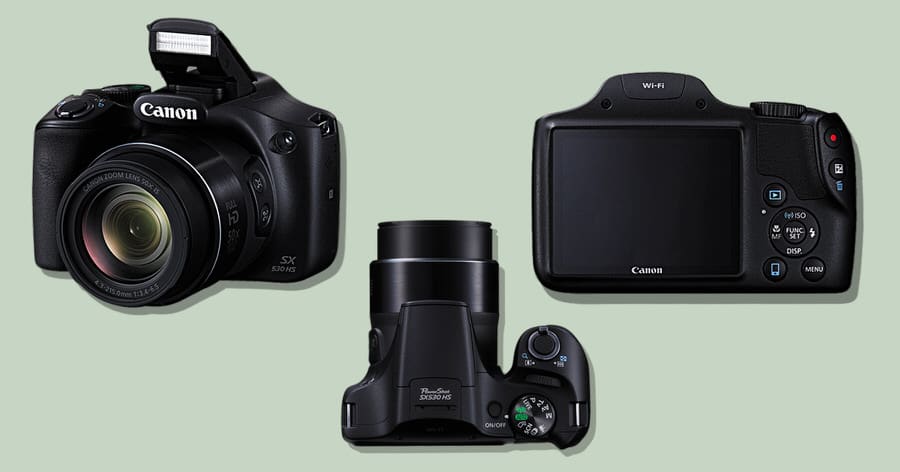
Canon PowerShot SX530 HS closeup
With its inbuilt NFC (Near Field Communication) technology, you can use the free Canon PowerShot SX530 HS Camera Connect app on your iOS or Android device for fast and easy image transfer that doesn’t require a computer.
The app launches automatically for fast and easy direct sharing of images and videos. One feature that we were particularly impressed with is that even when the camera is off, NFC automatically turns the camera on and establishes a connection. You’ll obviously need an Android phone with NFC to take advantage of this though.
We thoroughly enjoyed using the Canon PowerShot SX530 HS, and recommend it to anyone looking for a versatile point and shoot camera that’s packed with the latest features and offers great image quality at an affordable price.
Canon Powershot SX730 HS
Megapixels: 20.3
Sensor Size: CMOS (6.17mm x 4.55mm)
Weight: 300g (10.58 oz)
With the constant debate on whether there’s a compact camera that can actually keep up with professional model cameras, it’s admittedly a bit of an upward struggle for these little point and shoots. That said, the Canon PowerShot SX730 HS is definitely one to look out for.
I’d actually go as far as saying that I think it’s one of the best point and shoot cameras under $500.
The PowerShot SX730 HS from Canon is a versatile and compact point-and-shoot camera that integrates a wide-reaching zoom with apt multimedia recording capabilities.
One of the common misconceptions is that smartphone cameras are better than modern compact cameras. The truth is though that with digital imaging technology improving every year, point and shoot cameras like the Canon PowerShot SX730 HS just can’t be compared to your smartphone.
The Canon delivers impressive images thanks to the 20.3MP 1/2.3″ High-Sensitivity CMOS sensor paired with a DIGIC 6 image processor, which offers enhanced sensitivity to low-light and reduced noise – even when shooting up to ISO 3200. The sensor and processor also enable impressive continuous shooting speeds, at a rate of 5.9 fps, as well as recording Full HD 1080p/60 video.
The DIGIC 6 processor helps to enhance focus speed and subject tracking, while the 5- axis Dynamic IS helps to reduce the impact of camera movement for handheld low-light photography and smooth video quality.
The Canon PowerShot SX730 HS features a 40x optical zoom lens which covers a 24-960mm equivalent range. This makes it suitable for a wide variety of situations, from wide angle landscape photography to super-zoom wildlife photography.
There are actually a few different types of Image Stabilization on the Canon to help you get a sharp shot whatever your shooting conditions.
First, the ‘Intelligent IS’ image stabilization system complements the focal reach by minimizing camera shake, particularly when shooting at longer focal lengths.
Then there’s ‘Normal IS’ image stabilization, which corrects for a wide range of common camera movements.
‘Panning IS’ detects deliberate panning movements and doesn’t compensate for lateral movements – this is perfect for when you’re deliberately trying to blur the background while keeping the subject sharp with a panning shot.
‘Macro (Hybrid) IS’ minimizes and corrects shift-type camera shakes that commonly occur when working with close-up subjects.
For your videos, the Canon PowerShot SX730 HS ‘Dynamic IS’ is best suited when recording at wide-angle focal lengths, as it reduces unwanted shaking that normally occurs when recording while walking.
When using a tripod, the Canon PowerShot SX730 HS offers ‘Active Tripod’, a dedicated setting that automatically deactivates IS when the use of a tripod is detected. Then there’s ‘Tripod IS’ which minimizes the slight shaking that happens when you use the tripod.
If you are a travelling photographer this sleek, small, pocketable point and shoot camera may be perfect for you to slip in your jacket pocket each day.
You can share images and videos wirelessly with this camera thanks to its built-in Wi-Fi with NFC and Bluetooth connectivity. You can also control the camera from a paired smartphone or tablet, remotely, using the Camera Connect app.
The Canon PowerShot SX730 HS Bluetooth connectivity feature also allows you to use your smartphone’s location to geo-tag your photos, and the date can also be stamped on your imagery for ease of reference.
We had a lot of fun using Lightroom’s ‘Map’ function to see exactly where all our photos were taken while traveling with this camera.
The other key feature of the camera which makes it stand out when compared to its predecessor the Canon PowerShot SX720 HS is its large 3″, 922k-dot tilting LCD monitor. The tilting monitor can be tilted upward to 180°, which makes it perfect for shooting from low angles.
You can also flip the screen towards you, which makes this Canon a favourite for vloggers – check out the review below:
Other features that make this a favourite with the vlogger/selfie lovers out there include the Self Portrait Mode, which has a range of tools for capturing perfect selfies. These include skin tone smoothing, background blurring, brightness adjustment, and a customizable self-timer. This mode is automatically activated when the screen is tilted a full 180°.
There’s also Zoom Framing Assist, which automatically zooms in or out to keep the subject within the frame and in focus, and is useful especially when filming yourself at arm’s length.
If the AF is struggling to find the subject, you can always resort to Manual Focus Peaking, which ‘paints’ the outline of your subject when in focus, helping you make sure everything is pin sharp.
Creative Shot mode on the Canon PowerShot SX730 HS is a lot of fun, using various compositional, colour, and lighting elements to create unique images with a bit of artistic flair. It’s a bit like having Instagram filters but on your camera ;-)
I especially liked the Story Highlights mode, which automatically produces a highlight reel, comprised of videos and photos with added music and effects. If you’re someone who doesn’t have time creating slide shows manually after your holidays, this might be the camera for you!
If it’s still available on Amazon when you read this, I’d recommend grabbing the camera bundle which comes with a mini tripod, lens cleaners, SD card holders and a camera case with strap… all for about the same price as the camera alone.
If you are looking for a fully-featured compact camera offering the best value for money point-and-shoot technology this year, I highly recommend the Canon PowerShot SX730 HS.
Canon Powershot SX420 IS
Megapixels: 20
Sensor Size: CCD (6.2mm x 4.6mm)
Weight: 325g (11.46 oz)
The Canon Powershot SX420 IS is a point and shoot camera that blends an impressive long-reaching zoom with sharp imaging performance. As a pocketable bridge style camera, it’s easy to take with you everyday and provides for comfortable ergonomic handling.
Is it the best Canon compact camera? Well, it’s not as compact as the IXUS range, but it certainly packs in many more features.
One of the features that the Canon Powershot SX420 IS shares with its hugely popular predecessor the Canon Powershot SX410 IS is the 20MP 1/2.3″ CCD image sensor, and the DIGIC 4+ image processor.
The Canon offers high-resolution stills shooting with great image clarity and low light sensitivity up to ISO 1600, which makes it ideal for working in various environments.
The Canon Powershot SX420 IS can capture sharp images even at an equivalent zoom range of 1008mm. This is due to its high quality, expansive 42x optical zoom lens (as opposed to digital zoom). At the wide end, you can enjoy a 24mm equivalent field of view.
The Canon Powershot SX420 IS features a rear 3″ 230k-dot LCD that, though not a touch screen, allows you to compose imagery, review your photos and movies, and navigate the menu easily with the ergonomic button layout.
One disappointment was the below-average battery life – you can expect only around 195 shots per charge. This can be extended to around 260 shots with the camera’s Eco Mode, which intelligently reduces the camera’s battery consumption – I can’t really see any point of using standard mode, even though start up times are slightly slower.
As with all the best point and shoot cameras, you can control the Canon Powershot SX420 IS remotely from your mobile or tablet via Wifi, using the Camera Connect app.
Video shooting is 720p at 25 fps, as well as VGA 640 x 480 at 30 fps. If you record a lot of videos while walking, Dynamic IS will help to reduce camera shake while recording your videos at wide-angle focal lengths.
When recording at the telephoto end of the powerful zoom range, Powered IS compensates for any small hand movements. The Macro (Hybrid) IS, in addition to minimizing the appearance of shake, also compensates for shift-type shake that occurs when working with close-up subject matter.
Shooting Modes are pretty standard for entry-level cameras, but still, it’s nice to be able to fast-forward to your necessary settings when shooting in certain conditions with the Canon Powershot SX420 IS. There’s Low Light, Portrait, and Fireworks modes, and then of course Smart Auto mode which intelligently selects the proper camera settings based on recognized shooting situations.
Scene Modes are another fun feature to help you creatively adjust how your photographs look, in camera. The special effects which you can try out include the Fisheye Effect, Toy Camera Effect, and Monochrome – definitely nothing new here, but still entertaining to mess around with.
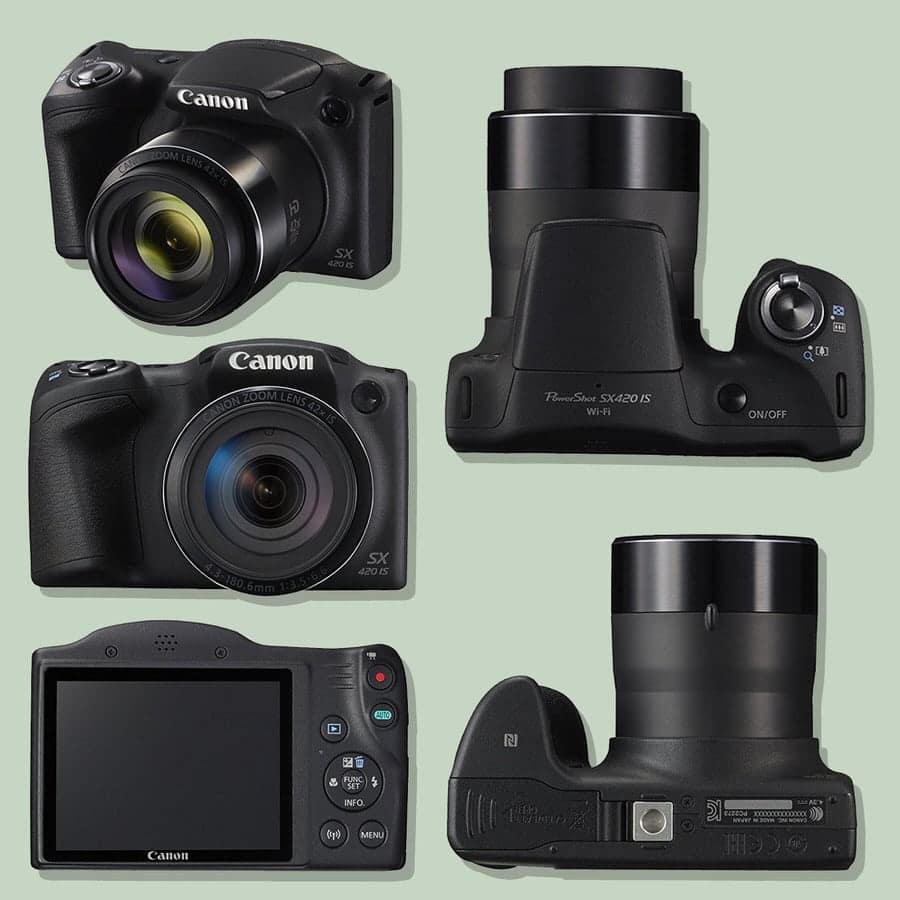
Overall, we think the Canon Powershot SX420 IS is more suitable for beginners rather than seasoned photographers. That said, the camera boasts plenty of features that make it an impressive, easy and fun to use camera, and has been extremely popular over the years – read the reviews – there are many happy owners who call it one of the best point and shoot cameras under $300.
So if you’re a beginner photographer, or simply someone who wants a great value for money point and shoot camera packed with the latest technology, the Canon Powershot SX420 IS is one you should definitely consider trying out.
Canon Powershot ELPH 180
Megapixels: 20
Sensor Size: CCD (6.17mm x 4.55mm)
Weight: 126 g (4.44 oz) including batteries
I was debating whether to add the Canon Powershot ELPH 180 to this point and shoot cameras review. It’s becoming a little long in the tooth, but if you are looking for a simple, compact and cheap point and shoot camera to capture memorable moments with family and friends, the Canon Powershot ELPH 180 is still a viable choice.
Slim, stylish and lightweight, this is the smallest point and shoot camera I tested, able to slip easily into a jeans pocket.
The ELPH 180 features a 20MP 1/2.3″ CCD image sensor coupled with a DIGIC 4+ image processor that produce vibrant JPEG images ready for sharing or printing.
ISO 1600 means you’ll be able to shoot in low light without a flash, but don’t expect anything extraordinary here. As for continuous stills shooting, you can get 2.2 fps. For video, HD 720p recording at 25 fps.
To complement the imaging capabilities and bring more shots within your reach, the 8x Optical Zoom lens offers a 28-224mm equivalent focal length range, with good wide-angle to telephoto perspective. Shooting at 224mm allows you to get very close to the subject, and if you’re physically close enough to it too, you can also introduce some depth and perspective into your images.
Digital IS minimizes the effects of camera shake, giving you minimum blur and sharper images for your handheld shooting.
Smart Auto mode intelligently selects the most suitable camera settings for what you’re photographing, recognizing shooting situations so you don’t have to fumble around to find the perfect picture mode yourself.
I found the Auto Zoom feature useful when shooting both subjects up close and far away. When enabled, the camera automatically closes-in on your subject, helping you to maintain a consistent composition, improving framing accuracy and sharp focus for easy shooting.
The automatic detection features of the Canon Powershot ELPH 180 also include Face detection AF, which intelligently detects faces in the frame and automatically locks focus on them – ideal for taking pictures of fast moving children! Then there’s Contrast Detection autofocus which gives enhanced contrast in your images.
The Canon Powershot ELPH 180 has a sleek design that is complemented by a fixed 2.7″ 230k-dot LCD rear monitor to make things more comfortable for you while in image and video playback, live view monitoring and while navigating the simple Canon menu.
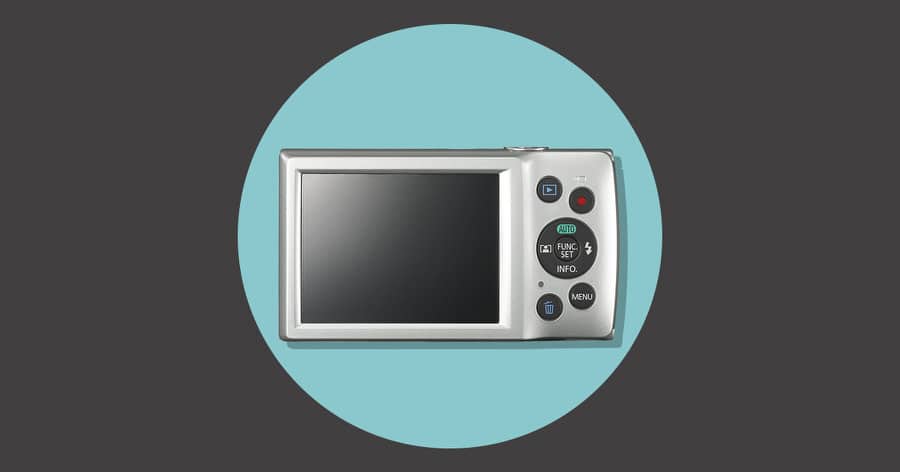
As is common with Canon point and shoot cameras, there are various Scene Modes, such as Fisheye Effect, Toy Camera Effect, and Monochrome – whether you’ll actually use these regularly is arguable, but it’s nice to have the option there if you fancy a play around with something different.
One nice addition is a Help Button on the LCD rear monitor that provides you with a simplified guide on how to use the various settings and shooting controls.
Obviously, at this price-point, this camera is not intended for the seasoned photographer. That said, if you are looking for one of the best point and shoot cameras under $200, then the Canon Powershot ELPH 180 is an option that definitely won’t break the bank.
Ricoh GR II
Megapixels: 16.2
Sensor Size: APS-C (23.7 mm x 15.7 mm)
Weight: 251 g (8.85 oz)
If you are looking to redefine your point and shoot photography experience, you should definitely check out the Ricoh GR II. Packing a fixed wide angle lens and large sensor into a small, palm and pocket sized body, this is an ideal camera for everyday shooting. It’s also a favourite for street photography.
The Ricoh GR II upgrades several features of the original GR, this time offering built-in Wi-Fi and NFC, improved white balance and noise performance, effects modes, and the capability to wirelessly control external flash units.
The Ricoh GR II could quite possibly be the world’s smallest digital camera with a 16 megapixel APS-C CMOS sensor. Featuring a compact 18.3mm f/2.8 GR fixed lens, (the equivalent of a fast 28mm wide-angle lens), you can expect incredible professional-grade imagery, even in low light.
The ‘high speed auto focus mode’ provides instant focus speed for quick snapshots, although burst performance isn’t as fast as some smaller-sensor cameras (see the Sony RX100 for example). It’s definitely fast enough for street shooting though, which is what so many photographers use the Ricoh for even in 2023.
Aesthetically, the GR II is well built with a tough magnesium alloy body and a sort of ‘rough’ texture that gives a high quality feel. There is a large rubber hand grip that runs from the front of the camera to the rear for your thumb, and strap loopholes for attaching a camera strap in portrait or landscape orientation.
The back of the camera features a 3inch fixed screen with a high resolution of 1230k dots (RGBW), and whilst isn’t a tilt-screen, it does offer decent viewing angles.
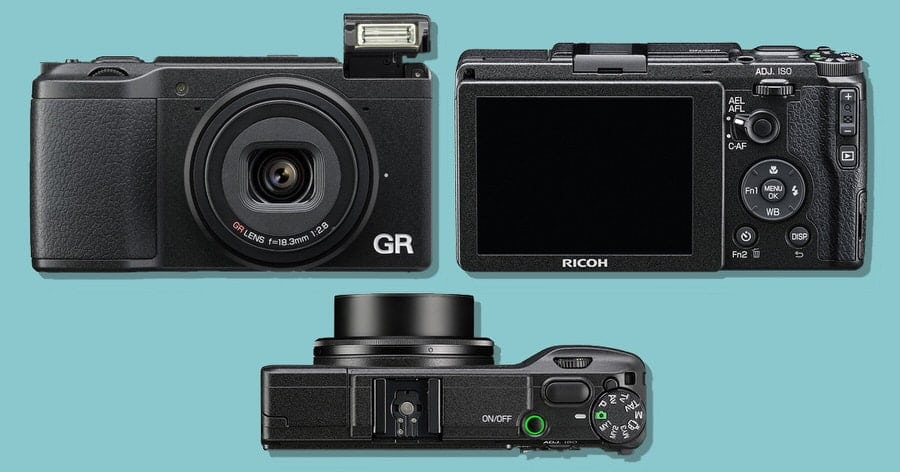
Built in Wi-Fi and NFC compatibility along with Ricoh Image Sync available for iOS and Android apps allows for smartphone remote connectivity and image viewing from your camera. One rather unknown bonus feature is the ability to wirelessly transfer RAW files, a neat function that makes the Ricoh GR II one of the best point and shoot cameras with wifi.
[Related: read more about the Ricoh GRII here.]
Continuous shooting has been improved from its predecessor, with a deeper buffer allowing more shots to be taken before slow-down. The Ricoh GR II camera records Full HD video at 30fps with stereo sound and features autofocus/exposure compensation during movie capture.
Whether you’re looking for a second point and shoot camera, a trusted daily shot companion, or are simply excited at the possibility of high quality images from an unassuming compact camera, the Ricoh GR II can hold its own even in 2023.
Fujifilm X100F
Megapixels: 24.3
Sensor Size: APS-C (23.6 x 15.6 mm)
Weight: 469g (16.54 oz) including battery and memory card
With its iconic rangefinder design, intuitive handling and incredible image quality, the Fujifilm X100F is a small, powerful, premium compact point and shoot camera. It’s also my choice of the best travel camera of the year.
Available in black/silver, or all-black (my choice!), the Fujifilm X100F sports advanced imaging capabilities with Fuji’s tried and tested 24.3MP APS-C-X-Trans CMOS III sensor and high speed X – Processor Pro image processor, delivering excellent color reproduction and gradation of tones.
The sensor/processor combo affords you a high degree of image quality and sharpness thanks in part to the lack of an optical low-pass filter. Fujifilm’s X-Trans sensor more closely mimics the organic nature of film in order to produce nuanced colors and smooth tonal transitions, while also reducing moiré and aliasing.
The Fujifilm X100F offers some of the best low light capabilities of any crop sensor point and shoot camera I’ve used – this is actually one of the main reasons I own this exact model.) With an ISO range of 100-51200, there’s little need to use the built-in flash until it gets really dark.
I’ve owned previous models of the Fujifilm X100 family and was always frustrated by slow operational speed. This is definitely not the case with the fourth generation, the Fujifilm X100F. Impressive stats include 8 fps continuous shooting, AF speed of 0.08 seconds, 0.2 second shooting interval, 0.5 second startup time, and a 0.01 second shutter release lag.
The fixed Fujinon 23mm f/2 lens provides a wide-angle 35mm equivalent focal length, an extremely popular field of view for your everyday shooting. The lens is designed as non-interchangeable (‘fixed’) and non-collapsible for enhanced optical quality.
Technically, the optical design utilizes aspherical glass to produce sharper imagery, while a Super EBC coating has been applied for resisting flare and ghosting; giving you greater contrast and color fidelity.
I’ve tested numerous Fujifilm lenses, and have kept coming back to the fixed lens on the Fujifilm X100F . There’s something about the quality of the image, especially when shot wide open at f/2.
Compact cameras with viewfinders are hard to come by, but one area that Fujifilm really leads the point-and-shoot camera market is in its viewfinder technology. The renowned Advanced Hybrid Viewfinder on the Fujifilm X100F provides both optical and electronic viewing (OVF + EVF), giving you the best of both worlds.
The OVF also provides the ‘range-finder advantage’, of allowing you to see beyond the constraints of the 35mm field of view, allowing you to view your subject’s movement before they enter your frame, for more precise composition.
When shooting with the Fujifilm X100F, it’s simple and fast to switch between both viewing methods by the use of a dedicated OVF/EVF lever on the front of the camera.
All buttons, dials and levers are perfectly positioned, allowing for simple one-handed operation of all main functions. I particularly love the retro dials, which are beautiful as they are practical.
A physical ISO dial is incorporated within the shutter speed dial, and the exposure compensation dial can now be set to a ‘C position’ for an increased +/- 5 stop range of adjustment. On the rear, there’s a focus lever for faster focus point selection, and most of the physical controls, buttons, and dials are on the right-hand side for easier one-handed operation.
The electronic rangefinder’s magnification is adjustable to 2.5x or 6x for improved precision. Real-time parallax correction also enables more accurate framing and focusing in manual focus mode.
The high-resolution 2.36m-dot EVF provides you with 100% frame coverage. Using the phase-detection pixels located on the imaging sensor, Digital Split Image assists in acquiring precise focus by showing comparative in and out of focus areas of the image.
When working with the EVF, you can opt for Shooting Effect Reflection settings to preview and utilize selected camera effects, such as Film Simulation modes.
When this setting is turned off, the image will revert to a natural view, void of any exposure or camera settings applied, to better suit working in darker conditions and to greatly reduce any display lag.
As is the case with all Fujifilm X-series cameras, the Fujifilm X100F integrates several gorgeous Film Simulation modes to mimic the look and feel of some Fujifilm’s classic film types.
These include Classic Chrome mode for delivery of muted tones and deep colour reproduction, reminiscent of a dated slide film. Provia mode offers natural-looking tones for everyday shooting, Velvia for a dramatic and rich tone with deep colour saturation, and Astia for reduced contrast for a softer depiction of skin tones.
Additionally, monochrome modes simulate the look of traditional yellow, green, and red black and white contrast filters, as well as Acros mode that can also be paired with colored filter effects. A Sepia mode is also available for producing an inherently nostalgic look.
There’s also Wi-Fi for your wireless image transfer or remote operation using a linked mobile device. We loved watching as the images ‘fall’ into an iPhone when transferred from the camera – a cute touch which makes the image transfer process quite fun!
The Fujifilm X100F may be a little pricier than the other compact cameras in this list, but for the beautiful design, hybrid viewfinder, excellent image quality and fun film simulation modes, it’s definitely one of the best point and shoot cameras of the year.
Nikon COOLPIX P900
Megapixels: 16
Sensor Size:CMOS (6.17 mm x 4.55 mm)
Weight: 899 g (31.71 oz)
If you’re looking for the absolute king of long zoom range point and shoot cameras, the Nikon Coolpix P900 should be at the top of your list. This is a ‘bridge camera’ which features a massive 83x, 24-2000mm equivalent lens!
Seeming to defy the laws of physics, the Nikon Coolpix P900 lens features a Dynamic Fine Zoom which boosts to 166x, or 4000mm equivalent. At its widest point, the lens, has a fast, f/2.8 maximum aperture, rising to f/6.5 at the furthest focal length.
[Related – see how you can blur the background using camera aperture.]
With such an extreme zoom, the camera needs a decent optical stabilization system to ably cope with image blur – enter the Dual Detect Optical VR system, which gives you an incredible 5-stop shutter advantage. You can literally shoot for the moon…
The impressive lens on the Nikon Coolpix P900 isn’t just long however – it’s also surprisingly sharp from corner to corner, in spite of the complexity of its optical design.
Full manual control is available, along with a range of automatic, semi-automatic modes (aperture priority and shutter priority), and several scene modes. Unfortunately however, RAW format shooting is omitted from the specs – whether this matters to you or not is up for debate.
The JPEG quality of the Nikon P900 is decent, with punchy colors and accurate white balance, though it tends to overdo noise reduction, which can smudge some details when you’re zooming in to examine images.

Nikon Coolpix P900 sample JPEG | Nikon USA
Complementing its ability to record full HD (1080/60p) video, the P900 also has a built-in directional microphone which adapts to the zoom setting. However, it doesn’t feature any port to plug in an external audio recording device.
This Nikon P900 camera features a 1/2.3 inch 16MP back-illuminated 1/2.3″ BSI CMOS sensor, the same size sensor found in many point and shoot cameras at this price point.
Despite its somewhat bulky appearance, the P900 is still classified as a compact camera because the lens is fixed… definitely not because of its dimensions!
Thankfully, all the buttons are on the right hand side, so you can use your left hand to support the main weight of the camera, especially when the lens is fully extended. With all the buttons grouped together, it’s easy to change settings using just your thumb.
The Nikon P900 sports a 3-inch, 921k dot fully articulating LCD screen. This is complemented by an electronic viewfinder which has an eye sensor for automatic activating and deactivating when your face is close – a nice feature that helps to conserve battery life.
The Coolpix P900 also features built-in Wi-Fi and NFC. A free app is available from the Apple and Google Play store, which enables you to remotely control your camera from your smartphone or tablet or to download images you’ve already taken. GPS is also built-in for your ease in geo-tagging your images.
Note that the Nikon Coolpix P900 is not in the lightweight point and shoot camera category, weighing in at a rather hefty 899 g (31.7 oz), about the same as an entry-level DSLR and kit lens. On the flip side of course, you get un-rivalled zoom capabilities with amazing image stabilization – something that can’t be said for any kit lens currently available.
If you’re keen on travel, astral and wildlife photography, the Nikon Coolpix P900 has a suitable ultra-long lens with amazing image stabilization, coupled with useful built-in GPS that makes it unbeatable at this price point.
Although it is one of the pricier Nikon point and shoot cameras, it’s hugely popular among photographers of all levels, and rightly so.
Canon PowerShot G9 X Mark II
Megapixels: 20.1
Sensor Size: BSI CMOS (13.2 mm x 8.8 mm)
Weight: 206 g (7.27 oz)
An ultra- slim, fashionable design encompasses high performing features in the compact point and shoot Canon PowerShot G9 X Mark II, one of the smallest point and shoot cameras available on the market, easily fitting into trouser pockets or a small handbag.
The metal body of the Canon PowerShot G9 X Mark II has a premium feel and design, with a metal mode dial and a metal control ring around the lens. It also had a familiar operational feel, owing to the well-implemented touch screen based interface, similar to that of a smartphone.
The G9 X Mark II offers a 3x optical zoom lens, a powerful larger-than-average 1 inch, 20.1 Megapixel CMOS sensor, powered by the impressive Canon DIGIC 7 Image Processor – this combination allows for snappy start up times, faster shutter speeds to help reduce any chance of image blur even in continuous shooting mode, and great high ISO for low-light shooting.
The 3x optical zoom lens is equivalent to 28-84mm in 35mm equivalent terms The aperture changes from f/2 at the zoom’s widest end, to f/4.9 when using the full zoom. Optical image stabilization is built in to the lens, keeping your images and videos steady, even in low-light.
Its Full HD video recording is done at 50/25fps (60/30fps NTSC), with stereo sound, optical zoom, and manual controls. You can also use the touch screen to set the focus position whilst recording, which allows for much smoother operation.
With full manual controls as well as numerous scene modes (including HDR mode), creative effects, and auto modes, the Canon G9 X Mark II is simple enough for beginners, while offering plenty of room to grow. I’ve found that it’s also a popular throw-in-the-pocket camera for pros who need something quick and simple to capture their memories too.
Part of the reason for this is perhaps the inclusion of RAW image capture, meaning more room to experiment with your files when back at your computer with Lightroom. Being able to shoot up to 8.2fps even in RAW mode is great for a camera of this size.
Wifi, Bluetooth 2 and NFC connectivity is built in, letting you control the camera from your linked smartphone or tablet, as well as backup and share images with the Canon Camera Connect app. You can also transfer images with the GPS location information in them.
The Canon Powershot G9 X Mark II is almost identical to the previous version, the Canon Powershot G9 X, though it has a few very small differences. There’s an updated mode dial, and Creative Shot mode that you could use to create random effects on images has been removed. Instead, you access digital filters and effects using Scene Mode.
Have a look at the review video below for a quick overview of what this amazing camera is capable of.
As mentioned before, the camera has a great build quality with a metal body and metal dials. There’s a nice leather effect on the grips of the camera (actually tough plastic) – it’s grippy enough, but if you have big hands, it might be safer to use a camera strap.
There are only four buttons on the back of the camera: the video button, Q / set button, Menu button and Info button. To change settings, you can use the touch-screen, or the front control wheel that surrounds the lens.
The Q button is for bringing up the Quick settings on screen for faster changing of common settings. For access to advanced settings, you simply need to press the menu button and use the 3 inch touch-screen to make any changes.
The touch-screen is clear and bright, and the layout of the menus and options available makes things simple to navigate.
The battery life is fair, rated at 235 shots according to Canon/CIPA test results, and this can be extended to 355 shots when using the ECO mode. This is a big upgrade from the Canon G9 X, which can only take 220 shots per battery life.
If you want a stylish point and shoot camera with features to attract both the beginner and enthusiast photographer, it’s hard to go wrong with the popular Canon G9 X Mark II.
Canon PowerShot G7 X Mark II
Megapixels: 20.1
Sensor Size: CMOS (13.2mm x 8.8mm)
Weight: 318 g (11.21 oz) including batteries
An update of the G7 X, the Canon Powershot G7 X Mark II point and shoot camera comes with a number of design changes and performance improvements, which have been packed into a sturdy all-black attractive body that is easily tucked into a jacket pocket.
This Powershot features an updated tilting touch-screen that tilts up and down. It also features the same 4.2x optical zoom lens as the G7 X, with a bright f/1.8-2.8 aperture, and is equivalent to 24-100mm in 35mm terms – you can actually focus all the way down to just 5cm, for a ‘faux-macro’ effect
The G7 X Mark II features a high-performance 1 inch 20.1 Megapixel CMOS sensor that helps capture high quality videos and images. Adding the power of the DIGIC 7 Image Processor with improved auto focus tracking enhanced IS, you are able to shoot photos with enough detail to print, or view on high-resolution monitors and retina mobile devices.
An ISO range of up to 12800 (and expandable to 25600) complements the new DIGIC 7 processor in giving you the ability to shoot in low light without flash, with minimal image noise. This allows you to use faster shutter speeds than you may have been able to otherwise, further increasing the chances of getting a sharp shot.
The Canon PowerShot G7 X Mark II offers high-speed continuous shooting up to 8 fps in RAW, JPEG and RAW+JPEG modes.
RAW + JPEG is usually a feature reserved for higher priced crop-sensor or full frame cameras, allowing you to get the best of both worlds with each shutter click – JPEG for speed and convenience, and RAW for when you want to spend time digging into your files during post production.
When testing the quality of images, we found no signs of red-eye on portrait photos, and skin tones were really good – typical of higher priced Canon cameras. Images also had excellent colour – bright and punchy without being overly saturated.
The Canon Powershot G7 X Mark II is equipped with Full HD capability for video recording. It also offers 5-axis optical image stabilization, stereo sound, and a range of frame rate options, with the quickest available being 60fps. Optical zoom and touch-screen can be used when recording video too.
The built-in Wi-Fi/NFC and in-camera RAW conversion help you share images with ease to an iOS or Android device using the Canon Camera Window app.
You can also remotely control the camera’s optical zoom, focus and flash mode, and even add GPS location information to your pictures.
The camera has numerous shooting modes, full manual controls, custom mode, plus auto, hybrid auto, and scene modes. With the improved front and rear grip, holding on to this compact camera felt much better than the predecessor the G7, and the solid metal body is reassuringly solid and well built.
According to Canon/CIPA test results, the G7 X Mark II battery life is rated at 240 shots. It’s best to enable the ECO mode to extend the battery life and get about 50 more shots per charge, without really sacrificing overall performance of the camera.
The Canon Powershot G7 X Mark II makes a great choice for a pocketable camera that doesn’t compromise on image quality and control. I love how it looks and performs, and had a hard time deciding between this and the Fujifilm mentioned above when deciding the overall best point and shoot camera of the year.
Sony Cyber-Shot RX10 IV
Megapixels: 20.1
Sensor Size: CMOS (13.2mm x 8.8mm)
Weight: 1095g (38.62 oz) including batteries
Sony is known for creating some powerful all-in-one bridge cameras, and the Sony Cyber-shot RX10 IV is the best one so far. It’s also somewhat of an unusual specimen…
Let’s get this out of the way first – the Sony Cyber-shot RX10 IV is not a cheap point and shoot camera! Similar in style to a small DSLR camera, the Sony Cyber-shot RX10 IV is priced more towards serious hobbyists and professionals with specific needs.
So, what are you getting for your money? The Sony Cyber-shot RX10 IV is a premium super-zoom all-in-one bridge camera with a 20-megapixel 1-inch sensor and a long-range 24-600mm equivalent zoom, all packed into a robust, ergonomic body.
The main selling point of this camera is its crazy continuous shooting performance. Thanks to a stacked BSI-CMOS sensor and Sony’s magical Bionz X processor, the RX10 IV produces mind-boggling 24fps stills photography shooting with continuous full auto focus and auto exposure – no DSLR comes anywhere close to it!
It’s important to reiterate here that the 24fps refers to stills photography shooting – we’re not talking about video here!
The sensor offers phase detect auto focus that adds depth-awareness necessary for focusing its long lenses. The sensor/processor combo makes this the perfect camera for shooting action.
The Zeiss Vario-Sonnar T* 24-600mm f/2.4-4 lens is nothing short of spectacular. If you consider that having a zoom lens of these proportions on a DSLR would mean carting around a lens the size of a small animal, the Sony Cyber-shot RX10 IV starts looking very compact indeed!
The combination of a massive zoom range with a fast variable maximum aperture makes this Sony great for shooting everything from wide angle landscapes to tightly framed action and wildlife images. f/4 at 600mm is a very impressive achievement.
Shooting handheld at such long focal lengths can introduce considerable camera shake, so the Sony compensates for this with its excellent built-in Optical SteadyShot image stabilization.
You can expect to use shutter speeds 4.5 stops slower than would normally be required to achieve high quality shots – shooting at 600mm at 1/250sec (at f/4) with OIS, we got sharp results 90% of the time. It’s a lot of fun being able to blur the background by zooming right in on a subject at 600mm.
As for image quality, the detail at f/4 and f/5.6 is sharp from center to corner across the majority of the zoom range. At f/2.8 images are slightly soft at the corners, but not distractingly so.
The Sony Cyber-shot RX10 IV features 2.35 million dot EVF, and with the new Bionz X processor, display lag during continuous shooting is greatly reduced.
The gorgeous 3 inch tilting touchscreen offers Touch Focus support, which can be used as a touchpad for placing AF points with your eye to the viewfinder or for selecting a point of focus in still or video mode.
Offering 4K (QFHD 3840 x 2160) movie recording at 24/30p, 1080p footage can be captured at up to 120fps, while S-Log2/S-Gamut 2 and S-Log3/S-Gamut3 are also supported.
The Sony Cyber-shot RX10 IV can also capture a 720p stream alongside the 4K footage to help speed up editing, and slow motion videos at up to 1000fps, with no pixel binning. It also offers microphone and headphone ports.
The mechanical shutter has a respectable maximum speed of 1/2000 sec, and an electronic high-speed Anti-Distortion Shutter, which eliminates the ‘rolling shutter’ effect commonly experienced with fast-moving subjects. When this is engaged, the camera will shoot with complete silence at a maximum shutter speed of 1/32,000 sec, making it an interesting option for darkening a sunny day for some creative off-camera flash photography.
As for connectivity options, there’s the usual Wi-Fi, NFC and Bluetooth, which offers hassle-free transfer of images to your smart device via the PlayMemories Mobile app. It’s a little bit clunky to use at first but still gets the job done.
The Sony Cyber-shot RX10 IV is one of the few truly weather-sealed point and shoot cameras… I actually feel a bit weird talking about this camera as a ‘point and shoot’ just because it has a fixed lens! It really has so much more to offer than what you typically associate with a p&s camera, and is packed with some truly amazing features.
With other impressive Sony mirrorless cameras such as the a7iii (reviewed here) and the a7R iii (reviewed here) available, it’s debatable as to the relevance of the RX10 IV. However, if you absolutely need a long zoom lens coupled with incredible continuous shooting abilities, this is definitely the camera to get.
Panasonic Lumix FZ1000
Megapixels: 21.1
Sensor Size: CMOS (13.2mm x 8.8mm)
Weight: 831 g (29.31 oz) including batteries
The Panasonic Lumix FZ1000 is a point and shoot compact camera that is also the first 4K recording compact camera with a 16x optical zoom lens, Wi-Fi, and EVF.
It’s a premium bridge camera for a premium price… although nowhere near the price of the Sony mentioned above ;-)
Irrespective of the cost, if you are in need of 4K-video shooting without the hassle of changing lenses, the FZ1000 is a unique product within its class. By encompassing a fast readout sensor and four-core Venus processor, the Panasonic can keep up with anything you throw at it.
The Panasonic Lumix FZ1000 offers a 20MP 1″-type MOS sensor and a Leica DC Vario- Elmarit 16x optical zoom lens, equivalent to 24-400mm in 35mm terms. The lens offers a bright f/2.8-f/4 aperture, and the camera offers full manual controls, sure to appeal to photography enthusiasts wanting to make their own creative decisions with their shooting.
The Panasonic Lumix FZ1000 also features an improved white balance system, and combined with the new Venus image processor, offers highlight/shadow adjustment, as well as built in RAW processing that allows you to tweak image parameters after shooting, apply noise reduction and toy with Photo Styles.
As for image quality, the Leica glass helps produce colourful, contrasty and detailed exposures.
The video capability of the Panasonic Lumix FZ1000 is impressive, including features such as pinpoint focus, focus peaking, zebra exposure warnings, cinema-like gamma profiles, and face and eye detection. Video is recorded at 4K (3840 x 2160 at 30/25fps), and you can take stills from the video to create 8 megapixel images.
Audio recording is enhanced with the optional Stereo Shotgun Microphone (DMW-MS2), with which you can use to adjust sound gathering characteristics to match any shooting situation.
The 3 inch screen on the back of the Panasonic FZ1000 is a tilting/vari-angle screen that flips out and twists round to face the front of the camera and uses a unique gap-less design. Being able to flip the screen in this way makes this a popular camera for all the vloggers out there.
The menu is clearly laid out, and the Q. Menu button gives quick access to common settings on the rear screen. The menu system has built-in help, so you can cut out some time reading through the manual to figure out the options and settings :-)
The EVF on the Panasonic FZ1000 is a 0.39 inch OLED screen with 2359k dot resolution. Thanks to the sensitive eye-detection sensor, when you hold the FZ1000 camera up to your eye, it quickly switches to the EVF to help preserve battery life while not in use. The view through the EVF is clear and detailed, and the refresh speed is very good.
Wi-Fi can be used for remote shooting and viewing with a compatible smartphone, playback on TV, sending images during recording, or sending images stored in the camera.
You can set up your wireless smartphone connection by scanning a QR code or manually typing in the connection details – something most iOS device users will have to do. You can also add GPS information to photos, or create a photo collage.
Battery life is rated at 360 shots according to Panasonic/CIPA test results, which is good, but I recommend getting a few spare battering to enjoy extended periods of shooting or for when you’re traveling.
The Panasonic FZ1000 seems to be aimed more at video shooters than photographers, but this doesn’t stop it from being a popular point and shoot camera, ready to capture great images in a range of shooting conditions.
Point and Shoot Cameras | Final Words
The point and shoot camera category is a strange one. Many still fail to understand its relevance, especially with smartphones being able to capture images so well in 2023.
Despite sales being on the decline, we believe that point and shoot cameras are still a great option for those wishing to capture higher quality images than their smartphones, in more challenging environments.
Optical zooms on point and shoot cameras allow you to shoot distant objects with ease without the need to buy huge, expensive telephoto lenses; advanced sensors allow you to shoot in lower light (with no flash) than a smartphone ever could; enhanced processors mean you can catch fast moving subjects by shooting several frames a second… and on top of all this, the actual photography experience is so much better using a dedicated camera than holding a phone.
If nothing else, I hope this review of the best point and shoot cameras of the year has opened your eyes to another great image capturing format available to photographers today.





